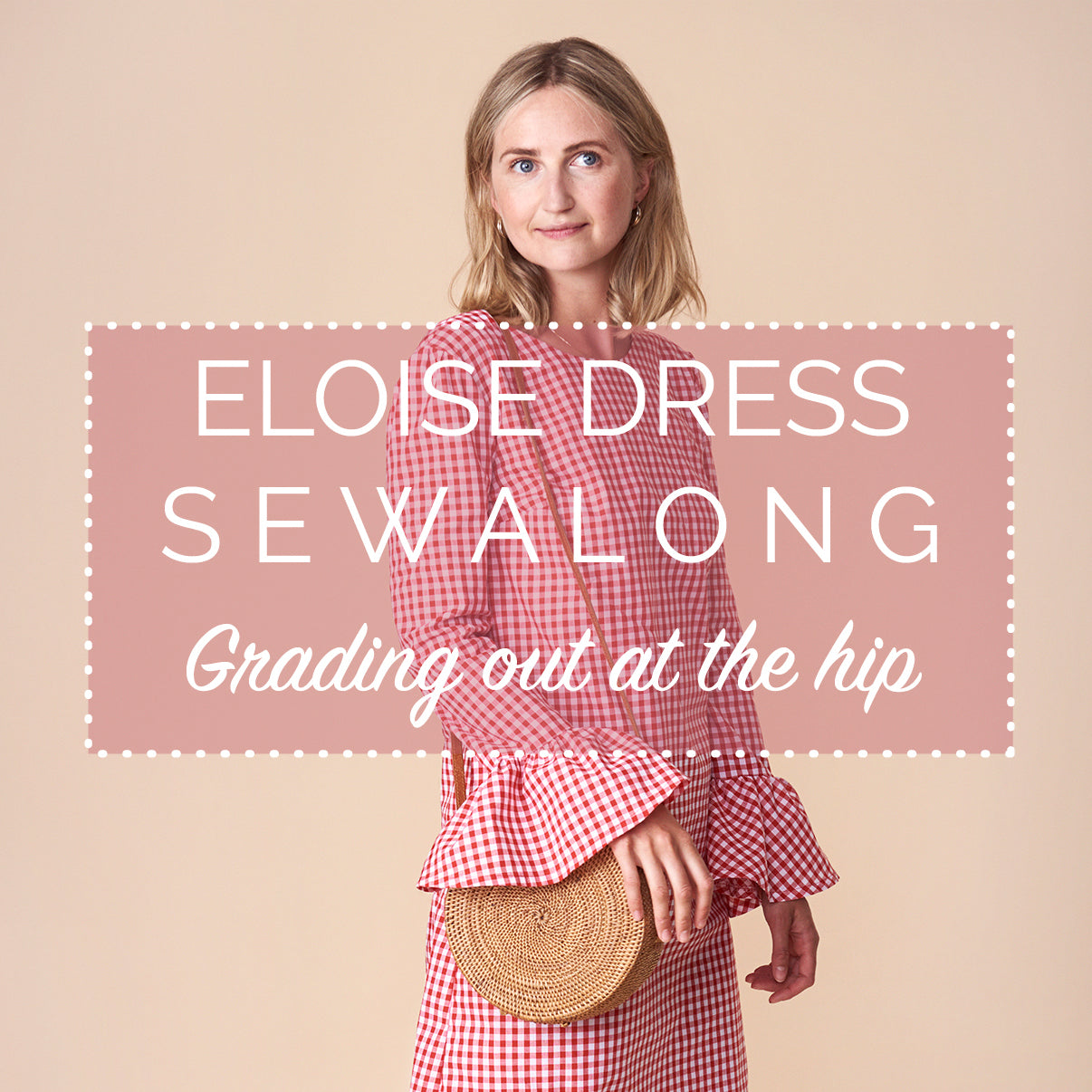Very few of us are built to fit "proportionate" sizing charts, and most of us will struggle with the fit of RTW garments in the shops at some point, if not always! Sewing patterns are also produced with this industry standard sizing chart in mind, but if treat that pattern as the foundation for some nips, tucks and tweaks, then we can create custom patterns that fit and flatter our unique bodies like nothing else.
The Eloise dress is a simple shift dress at her core. A relaxed fit through the bust, waist and hips, but if your bottom half falls into larger size category than your bust and waist, you'll need to make this simple hip alteration in order to avoid your finished dress being either too tight around your butt (if you were to make your size according to your bust and waist), or too loose across your shoulders, bust and waist (if you were to make your size according to your hip).

**To be taken to all the posts in the Eloise Sewalong, please click here**
GRADING BETWEEN SIZES FOR FULLER HIPS
Diagnosis - Unlike some fit issues that can only be detected on a toile, this is one that can be spotted on body measurements. In a nutshell, if your hip measurement falls into a higher size category than that of your waist measurement, then you'll most likely benefit from grading between sizes at the hip.
Foe example, if your bust and waist measure 35" and 28" respectively (or within half an inch or so), putting you at a size UK12, but your hip measurement is closer to 42", you'll need to grade out from a size UK12 to a size UK16.
Please note: In order to make a printed pattern legible, we often have to spread out the graded sizes ever so slightly to avoid a tangle of lineweights and indistinguishable darts. This makes grading between sizes directly on the pattern paper a potentially inaccurate undertaking! In this case, the dress front and back pieces aren't spread out so dramatically that it makes a difference. The correct way to go about this technique is to trace off both sizes before overlaying them so they are flush at the hem, before grading between the two side seams.
Step 1
Please note that we are using itty bitty replicas of our pattern to demonstrate - it's not full scale!
Lay out your dress front piece and begin highlighting your size at the bust and waist at the side seam.
As the side seam begins to curve out from the waist to the hip, gradually and smoothly grade from your waist measurement line to your hip measurement line. You could use a French curve to help you achieve a smooth line if it helps.
In this case, we have graded from a size UK12 out to a UK16.
When you're done, cut your pattern piece out. You can see that having graded out at the side seam, we've kept the top half of the pattern (the shoulders, bust and waist) to the smaller size, but increased the amount of space at the hip meaning that this dress should now fit and fall well without clinging at the hips as it would have done before the alteration.
This process will need to be applied to both front and back dress pieces.
And there you have it! With all alterations, we highly recommend that you make another toile to check that you're happy with the alterations that you made before cutting into your delicious fashion fabric!






Comments on this post (0)